Abarth 500 595 695 vs Citroen Jumpy Bus – Which model is better for everyday use?
Compare performance, boot capacity, efficiency and price at a glance.
Find out which car is the better choice for you – Abarth 500 595 695 or Citroen Jumpy Bus?
Costs and Efficiency:
When it comes to price and running costs, the biggest differences usually appear. This is often where you see which car fits your budget better in the long run.
Abarth 500 595 695 has a somewhat advantage in terms of price – it starts at 32600 £, while the Citroen Jumpy Bus costs 37900 £. That’s a price difference of around 5349 £.
In terms of energy consumption, the advantage goes to the Abarth 500 595 695: with 17.10 kWh per 100 km, it’s clearly more efficient than the Citroen Jumpy Bus with 24.10 kWh. That’s a difference of about 7 kWh.
As for range, the Citroen Jumpy Bus performs evident better – achieving up to 352 km, about 87 km more than the Abarth 500 595 695.
Engine and Performance:
Power, torque and acceleration say a lot about how a car feels on the road. This is where you see which model delivers more driving dynamics.
When it comes to engine power, the Abarth 500 595 695 has a a bit edge – offering 155 HP compared to 136 HP. That’s roughly 19 HP more horsepower.
In terms of top speed, the Abarth 500 595 695 performs to a small extent better – reaching 155 km/h, while the Citroen Jumpy Bus tops out at 130 km/h. The difference is around 25 km/h.
There’s also a difference in torque: Citroen Jumpy Bus pulls hardly perceptible stronger with 260 Nm compared to 235 Nm. That’s about 25 Nm difference.
Space and Everyday Use:
Whether family car or daily driver – which one offers more room, flexibility and comfort?
Seats: Citroen Jumpy Bus offers clearly more seating capacity – 9 vs 4.
In curb weight, Abarth 500 595 695 is convincingly lighter – 1410 kg compared to 2018 kg. The difference is around 608 kg.
In terms of boot space, the Citroen Jumpy Bus offers significantly more room – 3497 L compared to 185 L. That’s a difference of about 3312 L.
In maximum load capacity, the Citroen Jumpy Bus performs decisively better – up to 4554 L, which is about 4004 L more than the Abarth 500 595 695.
When it comes to payload, Citroen Jumpy Bus clearly takes the win – 982 kg compared to 385 kg. That’s a difference of about 597 kg.
Who wins the race?
The Citroen Jumpy Bus proves to be wins the duel decisively and therefore becomes our DriveDuel Champion!
Citroen Jumpy Bus is the better all-rounder in this comparison.

Citroen Jumpy Bus
Abarth 500 595 695
The Abarth 500, particularly in its 595 and 695 renditions, captures the spirit of Italian motoring with its compact yet aggressive design. Known for its lively performance and distinctive styling, this little powerhouse is a joy to drive, offering an engaging experience that appeals to enthusiasts. With its rich motorsport heritage, the Abarth 500 embodies the essence of fun and excitement on both the streets and the race track.
details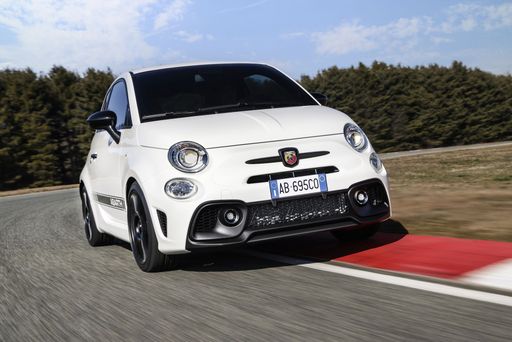 @ Abarth / Stellantis Media
@ Abarth / Stellantis Media
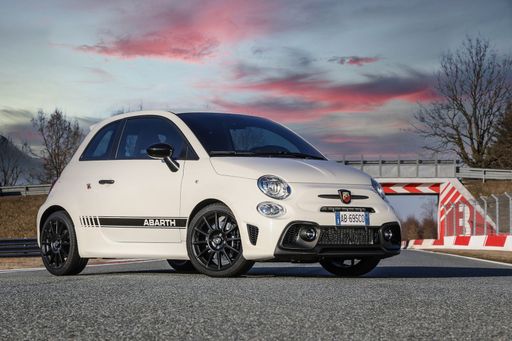 @ Abarth / Stellantis Media
@ Abarth / Stellantis Media
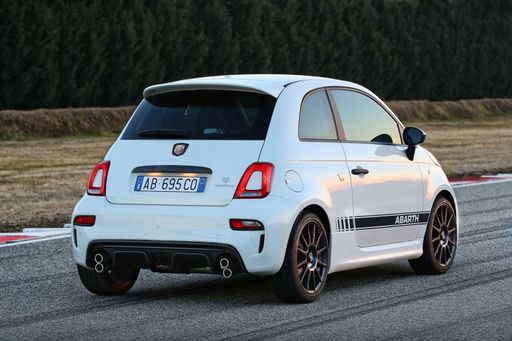 @ Abarth / Stellantis Media
@ Abarth / Stellantis Media
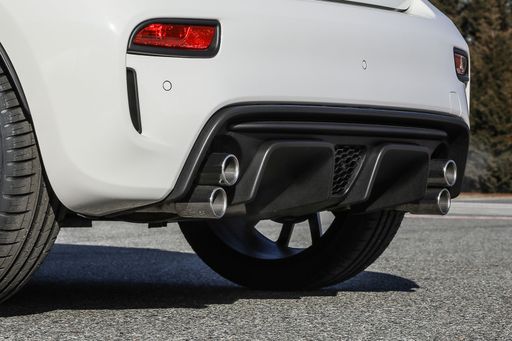 @ Abarth / Stellantis Media
@ Abarth / Stellantis Media
 @ Abarth / Stellantis Media
@ Abarth / Stellantis Media
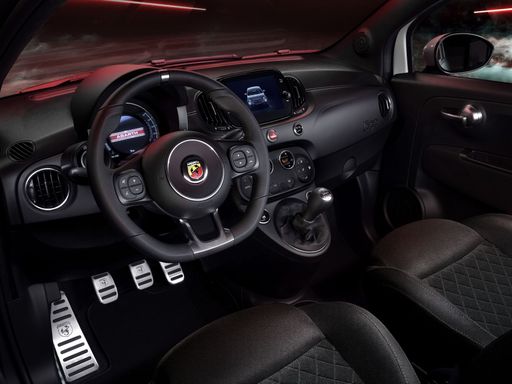 @ Abarth / Stellantis Media
@ Abarth / Stellantis Media
Citroen Jumpy Bus
The Citroen Jumpy Bus offers a versatile and spacious interior, making it ideal for both family outings and professional use. Its sleek design is complemented by practical features, ensuring a comfortable and efficient driving experience. With an emphasis on adaptability, this model caters well to a variety of transportation needs, seamlessly blending functionality with style.
details
 @ Abarth / Stellantis Media
@ Abarth / Stellantis Media
|
|
|
|
|
Costs and Consumption |
|
|---|---|
|
Price
32600 - 39400 £
|
Price
37900 - 43900 £
|
|
Consumption L/100km
-
|
Consumption L/100km
-
|
|
Consumption kWh/100km
17.1 - 18.8 kWh
|
Consumption kWh/100km
24.1 - 24.4 kWh
|
|
Electric Range
242 - 265 km
|
Electric Range
221 - 352 km
|
|
Battery Capacity
37.80 kWh
|
Battery Capacity
-
|
|
co2
0 g/km
|
co2
0 g/km
|
|
Fuel tank capacity
-
|
Fuel tank capacity
-
|
Dimensions and Body |
|
|---|---|
|
Body Type
Hatchback
|
Body Type
Bus
|
|
Seats
4
|
Seats
9
|
|
Doors
3
|
Doors
4
|
|
Curb weight
1410 - 1435 kg
|
Curb weight
2018 - 2240 kg
|
|
Trunk capacity
185 L
|
Trunk capacity
3061 - 3497 L
|
|
Length
3673 mm
|
Length
4983 - 5333 mm
|
|
Width
1682 mm
|
Width
1920 mm
|
|
Height
1518 mm
|
Height
1895 - 1935 mm
|
|
Max trunk capacity
550 L
|
Max trunk capacity
3968 - 4554 L
|
|
Payload
370 - 385 kg
|
Payload
850 - 982 kg
|
Engine and Performance |
|
|---|---|
|
Engine Type
Electric
|
Engine Type
Electric
|
|
Transmission
Automatic
|
Transmission
Automatic
|
|
Transmission Detail
-
|
Transmission Detail
Reduction Gearbox
|
|
Drive Type
Front-Wheel Drive
|
Drive Type
Front-Wheel Drive
|
|
Power HP
155 HP
|
Power HP
136 HP
|
|
Acceleration 0-100km/h
7 s
|
Acceleration 0-100km/h
-
|
|
Max Speed
155 km/h
|
Max Speed
130 km/h
|
|
Torque
235 Nm
|
Torque
260 Nm
|
|
Number of Cylinders
-
|
Number of Cylinders
-
|
|
Power kW
114 kW
|
Power kW
100 kW
|
|
Engine capacity
-
|
Engine capacity
-
|
General |
|
|---|---|
|
Model Year
2023
|
Model Year
2024
|
|
CO2 Efficiency Class
A
|
CO2 Efficiency Class
A
|
|
Brand
Abarth
|
Brand
Citroen
|
Is the Abarth 500 595 695 offered with different drivetrains?
The Abarth 500 595 695 is offered with Front-Wheel Drive.
The prices and data displayed are estimates based on German list prices and may vary by country. This information is not legally binding.
